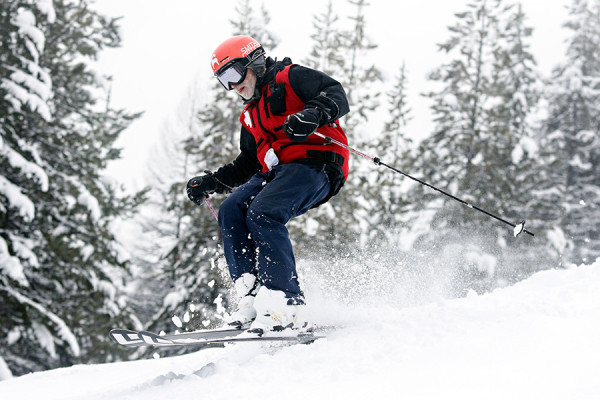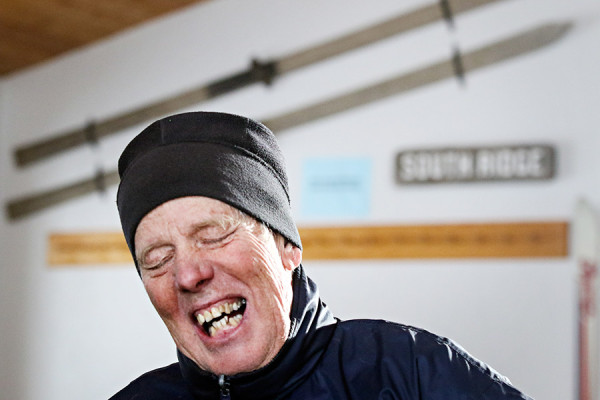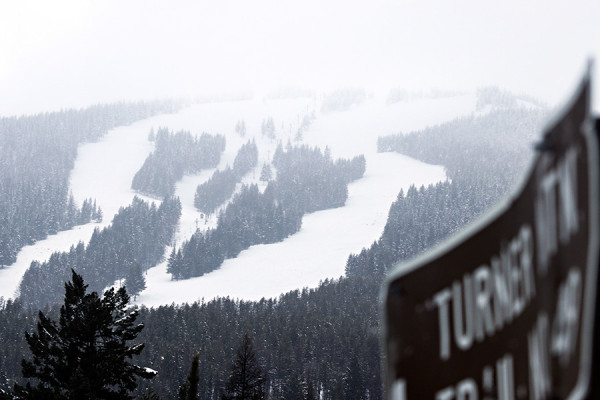
LIBBY – No one happens upon Turner Mountain by accident. This one-lift ski hill tucked into the southern edge of the Purcell Mountains is 22 miles from the closest town and 120 miles from the closest commercial airport.
Simply put, you have to want to visit Turner.
But those who do elect to drive the two-dozen rutted miles of old Forest Service road to Turner will discover a diamond in the rough, a ski hill from another era, whose charm has somehow out-foxed the modern trend of cookie-cutter resorts, allowing it to carve out an unlikely niche in the 21st century. There are no endless lift lines, luxury condos or overpriced lattes on this mountain. Here, in the heart of the Kootenai National Forest, you’ll find skiing the way it was meant to be: simple and fun, steep and cheap.
“We offer skiing the way it was 20 years ago,” said Scott Kirschenmann, one of Turner’s many volunteers, as he laced up his boots at the lodge on a recent Friday morning.

Turner is one of the dozens of mom-and-pop ski resorts still dotting the landscape from Maine to Montana, offering something many mountains don’t have these days: short lift lines and cheap tickets. A pass at Turner costs $37, a drop in the bucket compared to the state’s largest resort, which charges $106 for a full day on the slopes.
But despite being the ideal destination for the frugal skier, Turner and other mountains like it have to work overtime to make ends meet. These homegrown hills rely on volunteers to clear trails and run the lifts. And one warm winter can be devastating for the hill’s coffers. But those who have come to Turner since the early days, like the group of gray hairs who regularly strap on their skis every Friday, said the trail for small ski areas has always been un-groomed.
In 1936, a group of local skiers formed the Kootenai Ski Club in Libby and made their first runs on a low hill just south of town. By the 1950s, the group had grown tired of their city-limit antics and started looking for a real mountain to make tracks. Their search took them to the 5,952-foot summit of Turner Mountain, 22 miles north of town. In 1960, they strung up a rope tow and later a T-bar lift with treated timber from the nearby J. Neils Lumber Company mill.
Within a few years, though, the nonprofit Kootenai Winter Sports Inc. was already in debt and it looked like Turner Mountain would be a short-lived venture. That was until J. Neils Lumber came to the rescue and cut the group an $85,000 check.
“They basically said, ‘Here’s a check, we hope you make it,’” recalled Byron Phillips, 68, who’s come to Turner since the 1960s.
Turner, which is on a piece of land leased from the U.S. Forest Service, became a popular but challenging place for local kids to learn how to ski.
“Back then they never groomed the mountain and you basically learned by having your buddies take you to the top and then leaving you,” Kirschenmann said.
The mile-long T-bar, one of the longest in North America (locals joked that at Turner the real workout was going up, not coming down), stayed in place until 2001, when it was replaced with a secondhand chairlift. Bill Frazey helped take down the T-bar and said the old wooden posts were so rotted out that in some cases they didn’t even need to fire up the chainsaw.

Today, a board of directors (of which Frazey and Kirschenmann are members) runs the ski hill, which has just three paid employees. About 75 regular volunteers do the rest of the work and in return they get free season passes. The mountain is open to the public for three days a week – Friday through Sunday – and a normal day sees about 100 people.
The hill is also rented out to private parties for $3,750 a day. Jon Jeresek, another board member and one of the mountain managers, said renting out the slopes is what helps keep ticket prices low.
“If we didn’t rent out the hill we just wouldn’t make it,” he said. “Without the rentals we’d have to sell $50 lift tickets and that wouldn’t work for the locals… This mountain is really important to the community.”
Jeresek said the community steps up to help out. Last year, when the mountain’s groomer shed burned to the ground, volunteers spent their weekends swinging hammers and pounding nails to get it rebuilt in time for ski season.
The 2014-2015 season was an especially trying one for Turner. A warm winter resulted in a low snowpack and the mountain opened late and closed early. Instead of being open for 55 days, like it is during a normal year, the hill closed after 18.
Turner is not alone in its struggles with warmer winters. Experts say climate change could force dozens of ski areas across the country to shut down their lifts for good as snow packs continue to shrink.
Dave Martens is the manager of the nonprofit Bear Paw Ski Bowl near Havre. He said the last three years have been hard because of warm winters that are becoming the rule more than the exception. Last week, Bear Paw threw in the towel on the 2015-2016 season and took down the chairs after never getting enough snow to open. That means the hill’s bills will continue to pile up. In March, locals plan on holding a brew fest to raise money for the mountain.
“We really needed a good ski season,” Martens said.
But despite the challenges of keeping the lift running at a small ski hill (Bear Paw has one lift called “Chair 2”), Martens said it’s still worth it when the snow is falling. Like Turner, Bear Paw is the only place in the area where skiers can get their powder fix.
Kirschenmann said places like Turner and Bear Paw also survive because of the community created on these small hills. Sitting down for lunch at the base lodge on a Friday proves everyone knows everyone, and if there’s an outsider they won’t be one for long.
“My kids had seven different baby sitters with radios up here,” Kirschenmann said. “They were called Ski Patrol.”

Nearly every day the hill is open, it’s easy to run into Kirschenmann and other locals who are willing to show newcomers their favorite runs. On a recent day at the summit, some of the regulars were arguing about what to show some visitors next. When everyone determined what run they would ski, a few of the locals decided to head another way; after all, Turner is the type of place where if two people are already taking a run, it’s best to find another, because three’s a crowd.
The remoteness of Turner is a characteristic the volunteers who keep it alive are proud of. That’s clear when talking to anyone who regularly makes the 10-foot trek from the parking lot to the lift line.
“It’s really nifty to be a part of this place,” Frazey said. “It’s homegrown. It’s mom and pop. There aren’t many places like this left.”